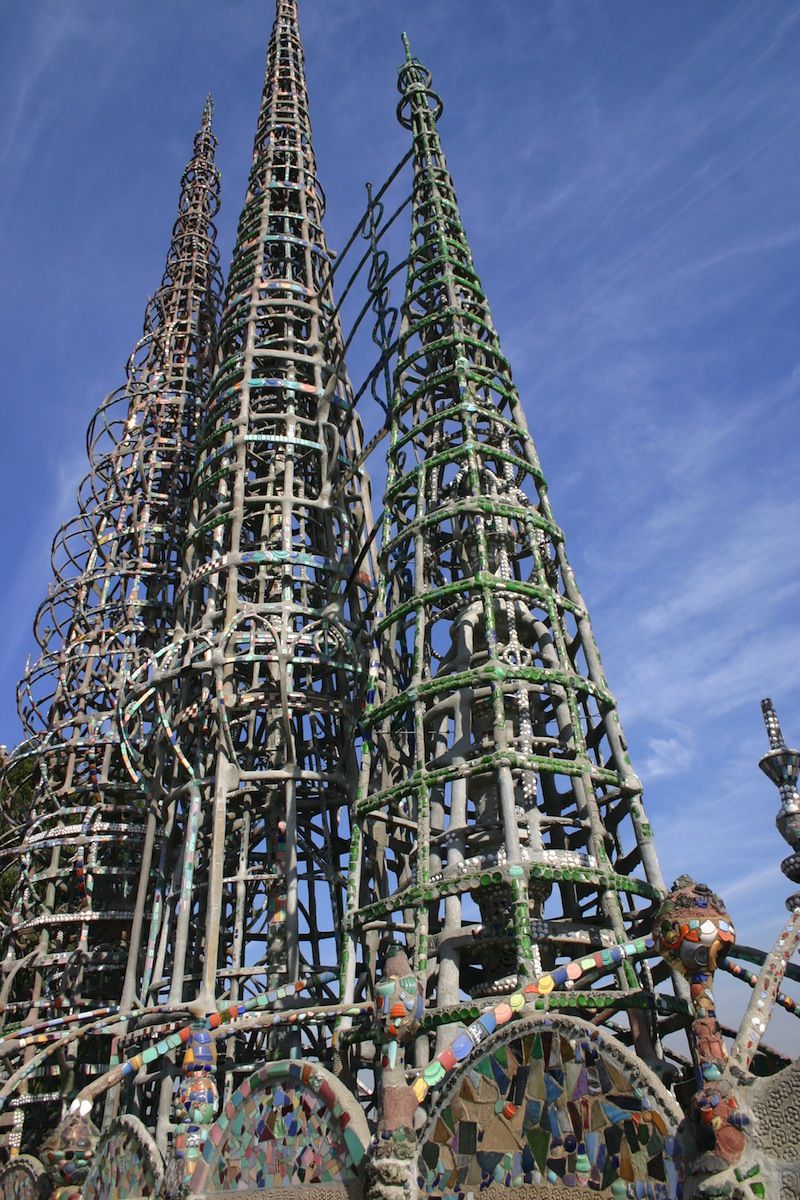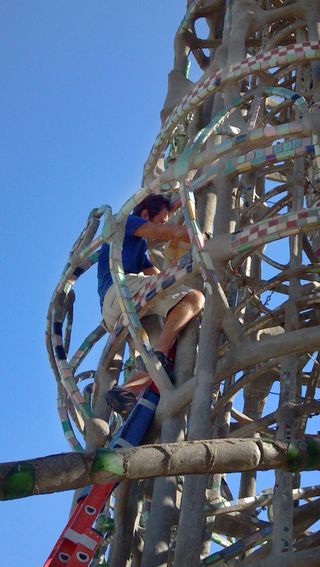Saving Historic Watts Towers from Mystery Cracks

The Watts Towers are a labor of love, graceful spires built by hand over 30 years in the Los Angeles-area backyard of sculptor and construction worker Simon Rodia.
Since Rodia completed the towers in 1955, conservators have sought to preserve the sculptural forest and its creations of steel and mortar adorned with glass, shells and broken ceramics. Tall cracks, presumably from sun and wind, resist repair efforts, and preservationists worry about shaking caused by the region's frequent earthquakes.
Conservators have made repeated repairs to the Watts Towers in the decades since Rodia finished his masterpiece. But the cracks continue to reopen.
"He knew what he was doing, because there's super redundancy in these structures. But it's not going to stand up for another 50 years unless something logical is done to preserve it," said Bob Nigbor, an earthquake engineer at the University of California, Los Angeles.
A National Historic Landmark, the Watts Towers are now undergoing seismic and structural studies by UCLA engineers to determine what causes the structures' persistent cracks and damage. The study will help the Los Angeles County Museum of Art and city of Los Angeles develop a long-term plan for restoring and maintaining the towers.

In January, the engineering team installed sensors and accelerometers on the towers to track daily changes caused by Southern California's hot sun, fierce winds and occasional temblors. The sensors will record continuously for a year, Nigbor said. A 3D laser scan (lidar) of the entire site was taken to create a detailed model.
The tallest of the 17 towers reaches nearly 100 feet (30 meters) high, and some of the towers are interconnected. Every day, their stiffness varies by 20 percent. (Think of stiffness as similar to rigidity, or the ability to resist being bent or deformed.) "That's huge," Nigbor said of the daily variation. "It's the most I've ever seen."
Sign up for the Live Science daily newsletter now
Get the world’s most fascinating discoveries delivered straight to your inbox.
Early results show the striking towers trace daily hypnotic ellipses, bending away from the sun by about 1 inch (2.5 centimeters) as it moves across the sky. The tilting opens and closes the cracks, said Winston Boyce, a UCLA undergraduate involved with the project. The researchers said they think that heating and cooling of the concrete mortar and steel also expand and shrink cracks. The team is now waiting for the region's strong Santa Ana winds to arrive, to measure how much they shake the towers. [Watch: Cold-Formed Steel Building Holds Up in Shake Test]
"All of these factors go into the crack displacement, and we're trying to figure out exactly how the cracks respond to them," Boyce told LiveScience.
The steel pipes and rods supporting the towers aren't welded together; instead, they're wrapped with wire mesh and coated with mortar. Rodia constructed the towers from whatever materials he could find.
"It's a composite structure of unknown properties. It's actually a very complex problem. From an engineering perspective, it's fascinating," Nigbor said in August at the annual meeting of the George E. Brown, Jr. Network for Earthquake Engineering Simulation in Reno, Nev.
Email Becky Oskin or follow her @beckyoskin. Follow us @livescience, Facebook & Google+. Original article on LiveScience.










